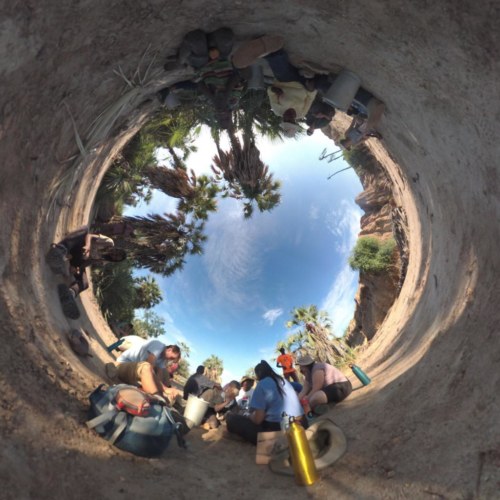
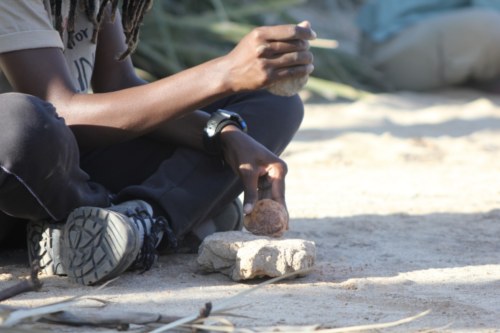
We are in our last module of the field school, Archaeology of Turkana Basin, which is taught by Dr. Sonia Harmand, an expert in Early Stone Age archaeology and evolution of stone tool making. The Turkana Basin is rich in archaeological deposits with many of the discoveries of stone tools made on the East and West side of the Basin. Stone tools are key in understanding human evolution as they reflect cognitive abilities and morphological developments of their makers.
Students have been learning about the complexities involved in tool manufacturing, modifying and use, and the ongoing debate about the capabilities of non-human primates making and using tools. The Early Stone Age period in Africa exhibits three technologies used by early hominins in the archaeological record: Lomekwian, Oldowan and Acheulean.
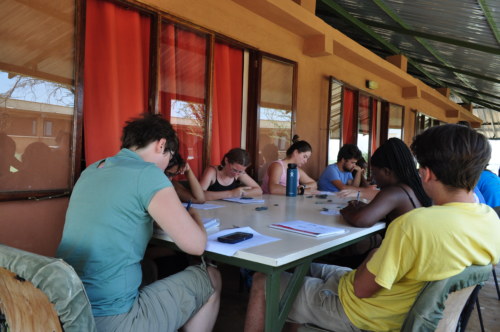
Students examining flakes carefully. Photo credit: Wambui Mbogo.
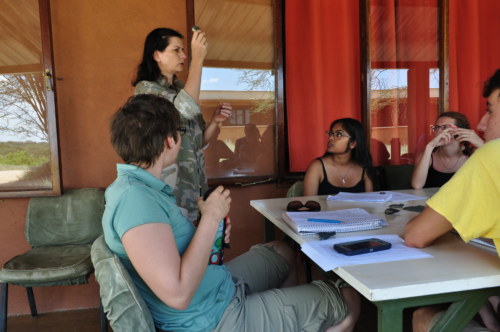
Dr. Harmand explains to students how flakes are made. Photo credit: Wambui Mbogo.
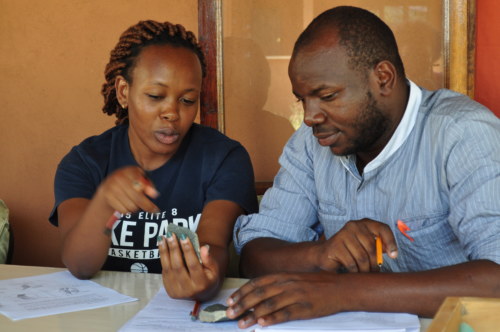
Basil and Margaret share ideas. Photo credit: Wambui Mbogo.
Some non-human primates employ percussive techniques in crushing and breaking bones and nuts. Chimpanzees, capuchins, and macaques are some of the non-human primates that use tools to crack open nuts. They tend to use resources in close proximity such as stones or even wood for pounding. Discussions revolve around tool manufacturing, modifying and use, with the aim of differentiating the cognitive abilities of monkeys from humans. Dr. Harmand led the students in a lab activity that involved identifying and describing flakes and cores in detail.
On Wednesday afternoon, the students walked down the Turkwel River where they collected palms nuts. After successfully collecting enough palms, they had to look for tools to scrape off the shell before consuming the nuts. Students collected their anvils and hammerstones from the nearby sandstone sediments and got to work.
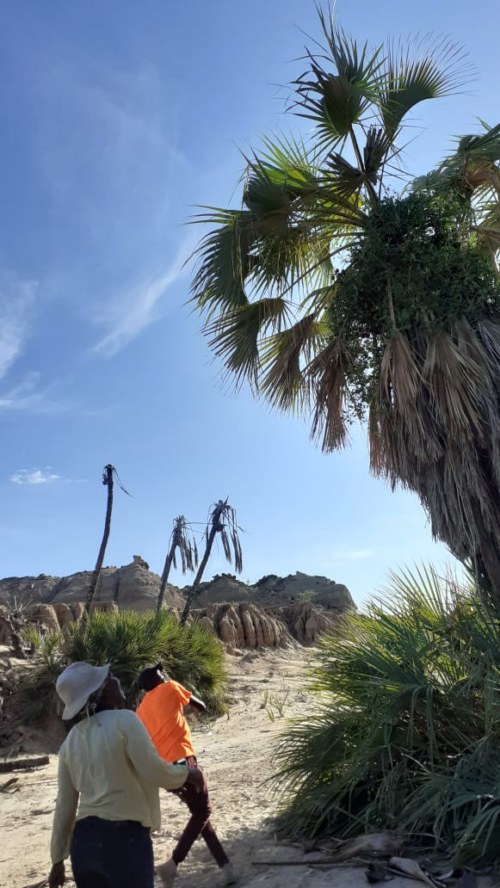
Emmanuel had his best throw. Photo credit: Medina Lubisia.
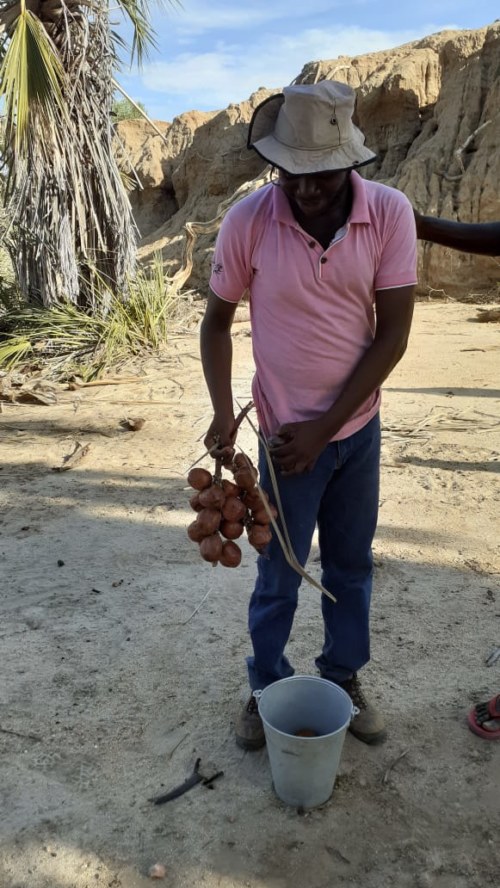
Basil collected many palm nuts. Photo credit: Medina Lubisia.
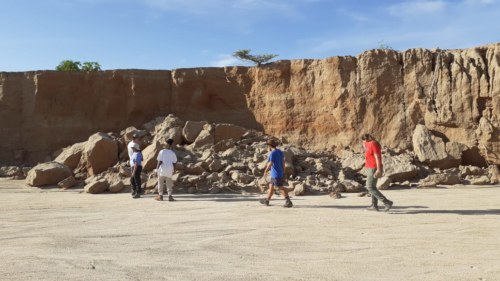
Students set out to search for tools. Photo credit: Medina Lubisia.
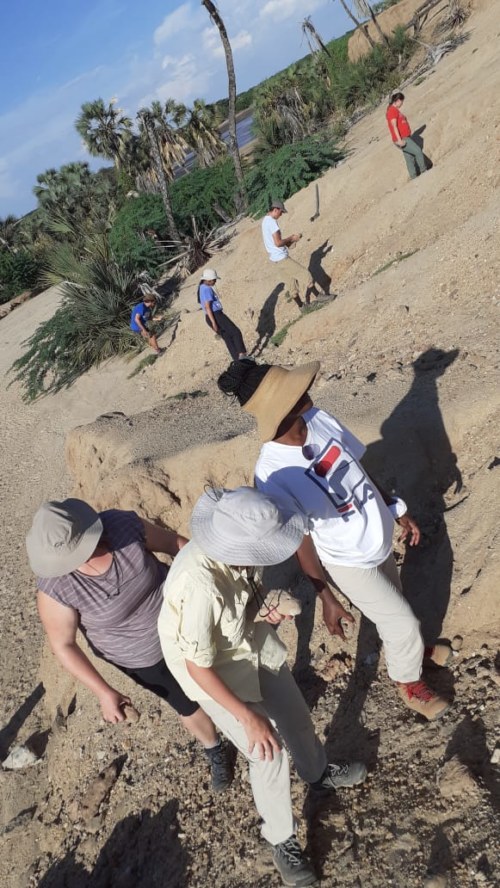
They searched everywhere! Photo credit: Medina Lubisia.
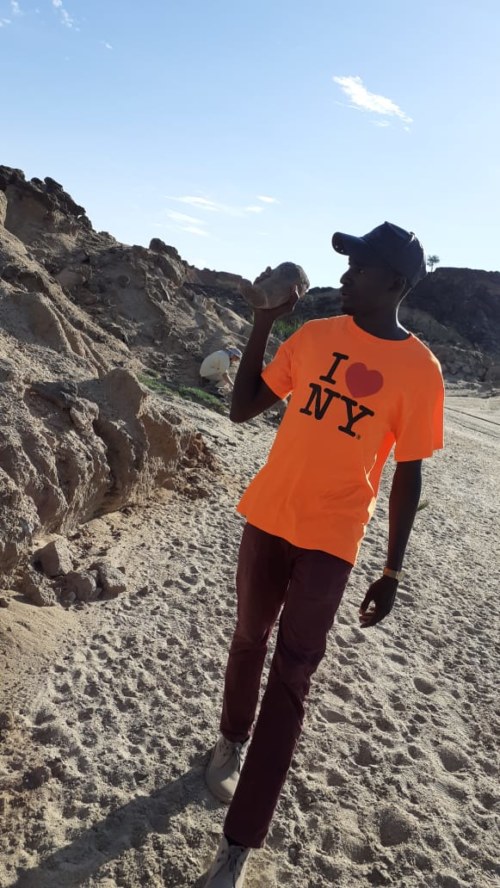
Emmanuel found a nice hammerstone. Photo credit: Medina Lubisia.
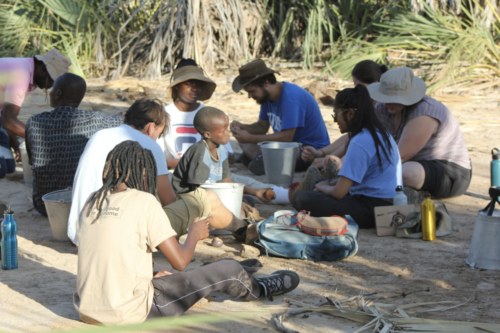
Students busy scraping shells off the nuts. Photo credit: Acacia Leakey.
The palm nuts are consumed by locals in the area. Young kids joined us in the exercise as they were experts in scraping the shells off.
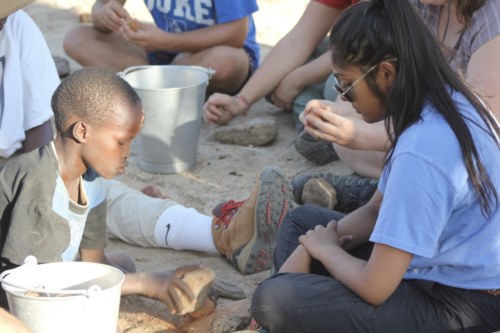
The young boy shows Mallika how to scrape. Photo credit: Acacia Leakey.
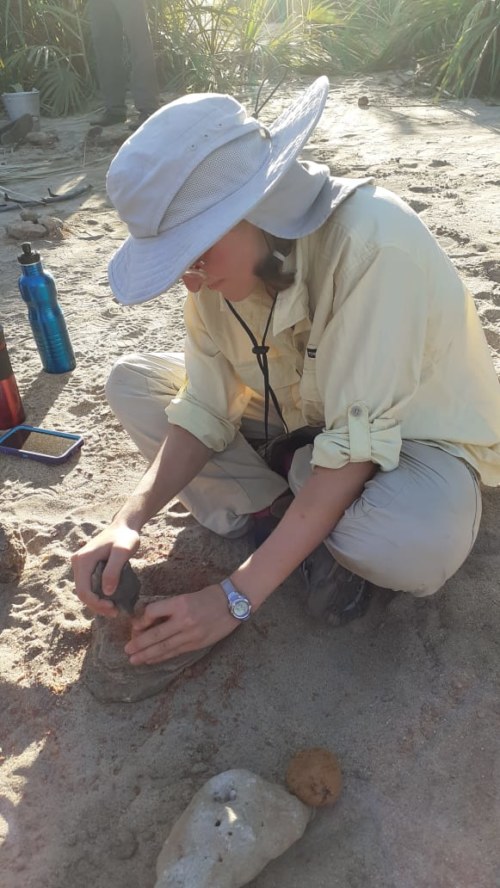
Keely tries to scrape the shell off. Photo credit: Medina Lubisia.
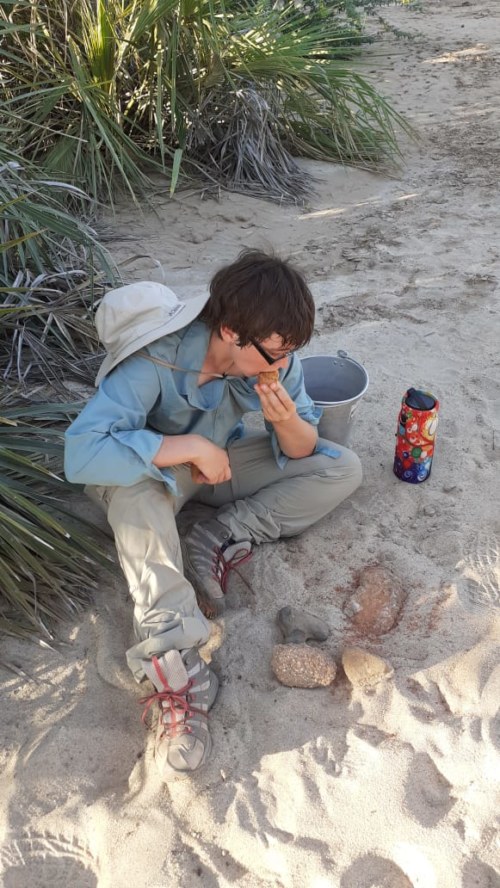
Carrie took a bite! Photo credit: Medina Lubisia.
Besides enjoying the sweet palm nuts, the students had confidently mastered the scraping technique and could clearly differentiate between non-human primate tool modifying and humans tool manufacturing and use.
We will end our week camping at Nariokotome. Stay tuned for more updates!





